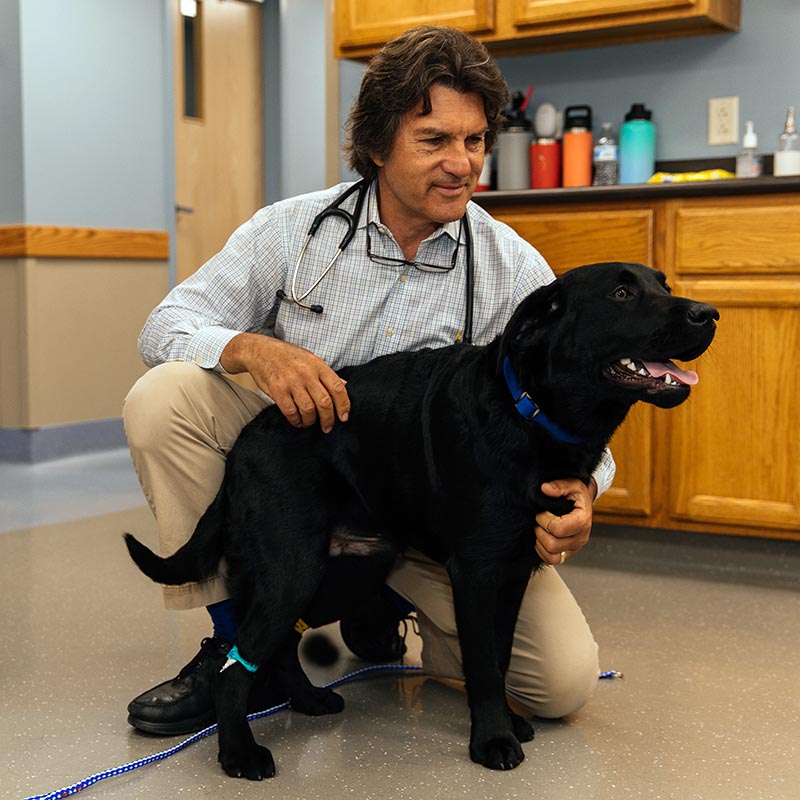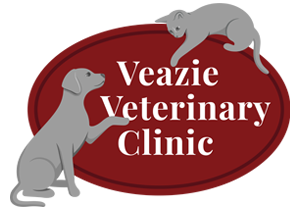At Veazie Veterinary Clinic, we recommend having your pet’s teeth checked and cleaned at least once a year.
Dental care, and professional dog and cat teeth cleanings, are an important and often overlooked factor in keeping your pet healthy and happy. According to the American Veterinary Dental Society, 80% of dogs and 70% of cats show signs of oral disease by three years of age. Consistent home dental care and routine professional examinations can help prevent problems like bad breath and painful oral infections.
HOW TO TELL IF YOUR PET NEEDS DENTAL CARE
Your veterinarian will examine your pet’s teeth and gums as part of their annual physical exam. Depending on the level of dental disease present, they may recommend cat or dog teeth cleaning. Dental cleanings are an anesthetic procedure requiring a day-long stay here at our clinic near Eddington, ME.
The actual cleaning procedure includes:
- Ultrasonic scaling
- Assessment of the gum condition
- Full mouth radiographs (X-rays)
- Polishing
- Extractions (if required)
Regular cat or dog teeth cleaning in Eddington, ME, is crucial for maintaining your pet’s oral health. Similar to humans, pets are susceptible to tartar and plaque buildup, creating pathways for harmful bacteria to infiltrate the gums, potentially leading to gingivitis. While various over-the-counter products like dental chew toys are available, the most effective solution remains professional dental cleanings.
To ensure your pet’s dental health is in check, it’s essential to be vigilant for signs of potential issues, some of which may not be readily visible. Therefore, our veterinarians recommend annual dental check-ups for your furry companions. Here are some indicators to watch (or sniff) out for:
Bad breath
Broken, loose, or missing teeth
Discoloration or tartar buildup
Excessive chewing or drooling
Reduced appetite or inability to chew
Swelling and bleeding in or around the mouth

Faq About Pet Dental Care in Eddington, Me
What is the oral health procedure?
STEP 1: FULL MOUTH X-RAYS
Full-mouth X-rays are essential for detecting and diagnosing oral issues hiding below the gum line. We can also use them to assess tooth root health, check for unerupted teeth, abscesses, cysts, and various other problems.
STEP 2: SUPRAGINGIVAL CLEANING
This involves cleansing away all traces of tartar and plaque above the gum line, and better visualizing the surfaces of each tooth.
STEP 3: SUBGINGIVAL CLEANING
Next, we need to clean the portion of each tooth that is situated below the gum line. This is an extremely important step, as most oral diseases occur in this area. The plaque and calculus found under the gum line are what cause periodontal disease in dogs and cats.
STEP 4: ADVANCED DENTAL IMAGING
We utilize advanced dental imaging to check for root abscesses, tooth enamel defects, retained roots, jawbone loss, and other problems.
STEP 5: POLISHING THE TEETH
Removing plaque and calculus from your pet’s teeth results in microscopic abrasions on the enamel surface. These abrasions can increase plaque buildup on the teeth, so it’s essential that we polish the enamel smooth to remove these abrasions and reduce the adhesive capacity of future plaque buildup.
STEP 6: SUBGINGIVAL LAVAGE
When we scale and polish your pet’s teeth, this leaves behind debris that get trapped under the gum line. Without treatment, this can cause local inflammation of the gums. To prevent an increased chance of infection, we carefully flush out the debris from under the gums with an antibacterial solution.
STEP 7: FLUORIDE TREATMENT
Fluoride helps to strengthen your pet’s tooth enamel, and it can reduce tooth sensitivity, as well. Feline Oral Resorptive Lesions can also be reduced with the help of fluoride. Once treatment is applied, we are careful to remove any remaining fluoride from your pet’s mouth to prevent swallowing.
STEP 8: TREATMENT
Should we find any abnormalities or disease during your pet’s oral assessment and imaging, we can provide the necessary treatments to resolve these issues. Examples of treatment may include tooth extraction, local antibiotic treatment of pockets around the teeth, and bonded sealants for tooth fractures. Your veterinarian will discuss their findings and your pet’s treatments, so you fully understand the situation.
STEP 9: PREVENTION
Prevention is the most critical aspect of pet dental care. Our goal is to reduce your pet’s risk for periodontal disease and other oral issues as much as possible. In addition to recommending regular teeth cleanings, we can also advise you on which products and procedures you can use at home to keep your pet’s teeth clean and healthy.
Could my pet be in pain?
Dogs and cats will hide their pain as much as possible, so it isn’t always easy to tell. Many pets will continue to eat and behave as normal, despite having buildup and potential inflammation in the mouth. The most obvious indicator that dental care is needed is bad breath, which may be accompanied by discomfort. Drooling and frequent licking can also be a sign of oral pain.
What are surgical extractions?
If your pet has a tooth (or teeth) that is damaged and/or infected beyond repair, surgical extraction may be the best option for improving your pet’s health and comfort level. Your veterinarian will notify you before extracting the tooth. Once the tooth is extracted, we will take additional dental X-rays to make sure all of the tooth, especially the root, has been fully removed.
What other dental procedures are offered?
Sometimes, our pets need more than a standard teeth cleaning. Veazie Veterinary Clinic can provide advanced dental care services including:
- Endodontics (root canal therapy)
- Surgical extractions (guided by digital X-ray)
- Removal of retained tooth roots
- Dentigerous cyst removal
- Orthodontics for malocclusion
- Jaw fracture repair
- Full mouth extractions
What dental diet do you recommend?
Our veterinarians recommend Royal Canin Dental diet for pets. However, there are other high-quality foods available, but you should check with your vet before selecting. Due to the wide variety of foods out there, it can be difficult to differentiate the good from the bad. To help you narrow your options, look for the seal of the Veterinary Oral Health Council (VOHC) on the packaging – that is a sure sign of the product’s quality and safety.
How do I care for my cat’s teeth?
Dental Disease
Cats usually have slightly fishy breath, but if it is strong or offensive it can be a sign of a larger problem. Dental disease is one of the most common problems in adult cats. Plaque and tartar on the teeth can lead to periodontal disease and gingivitis. Untreated dental disease can lead to oral pain, difficulty chewing, abscessed teeth, tooth loss, and potential infection in other organ systems including the heart and kidneys.
Cats are especially susceptible to inflammation of the oral cavity. They can develop resorptive lesions (FORL) in which the body eats away at the tooth until it is completely gone.
A Proactive Dental Plan
Because dental health is an important part of your cat’s overall health, it’s important to develop a proactive plan to deal with dental disease and hopefully prevent the loss of teeth. This would include:
- Veterinary dental exams during physicals
- Home dental care (brushing teeth)
- Monthly at-home oral exams by owners
Is There a Food That Can Help?
Lots of products claim to promote dental health. The truth is dental disease is mostly genetically driven in cats. Although many believe that dry food is better for a cat’s teeth than wet food, some veterinarians believe the added sugar in “crunchies” can actually lead to plaque accumulation. The best thing you can do (although your cat may not allow it) is brush their teeth and make sure the vet is monitoring their dental health.


